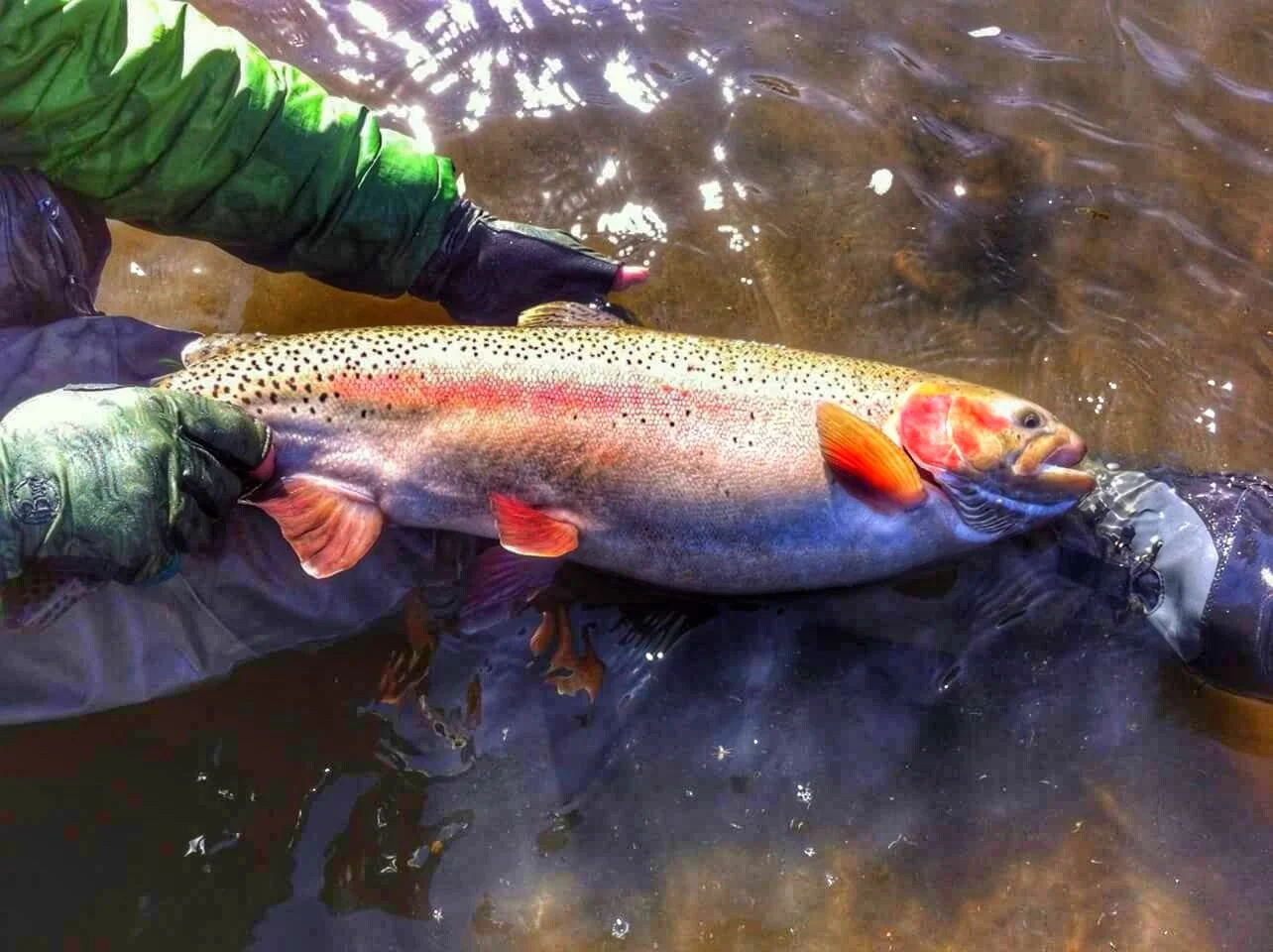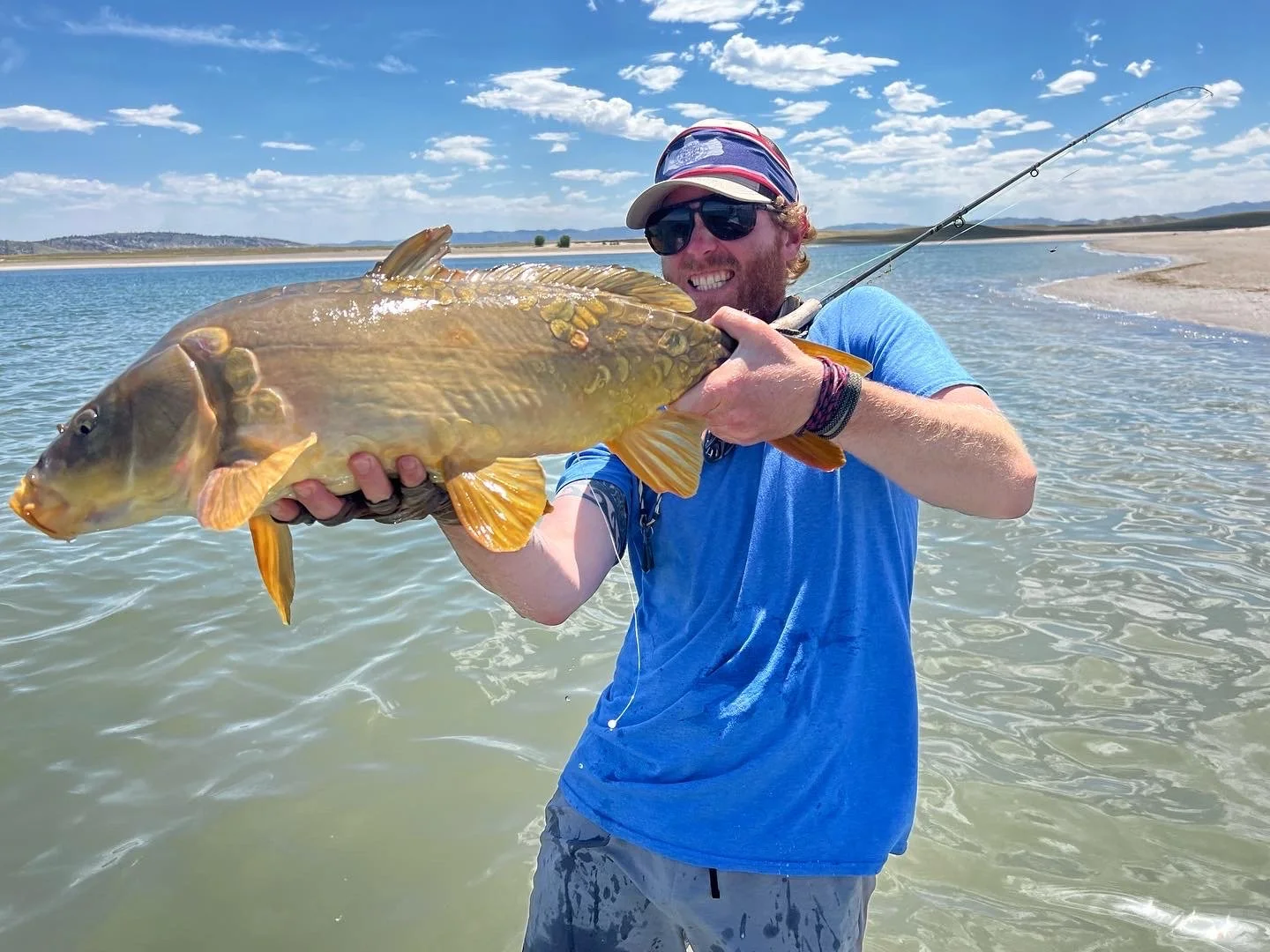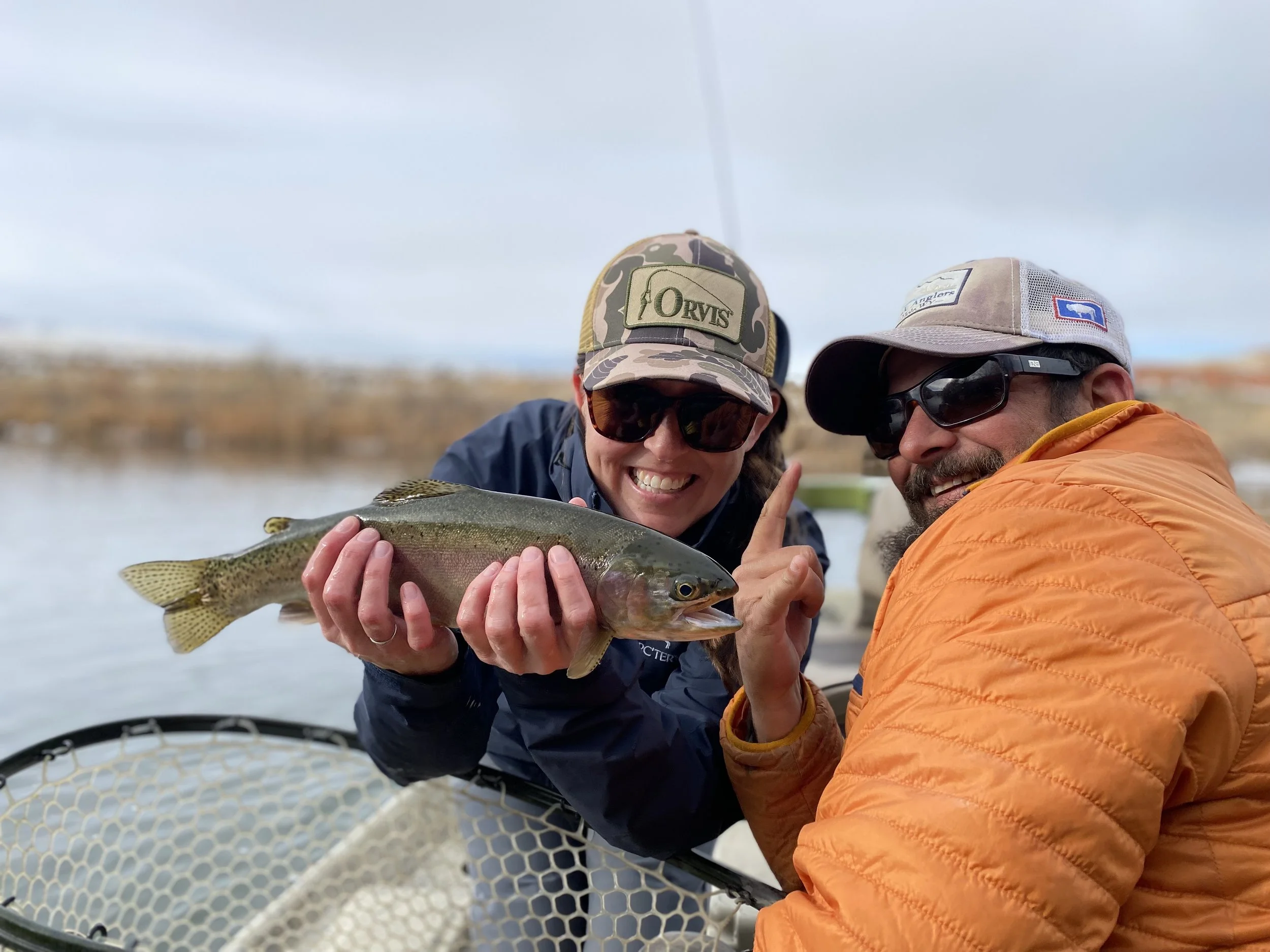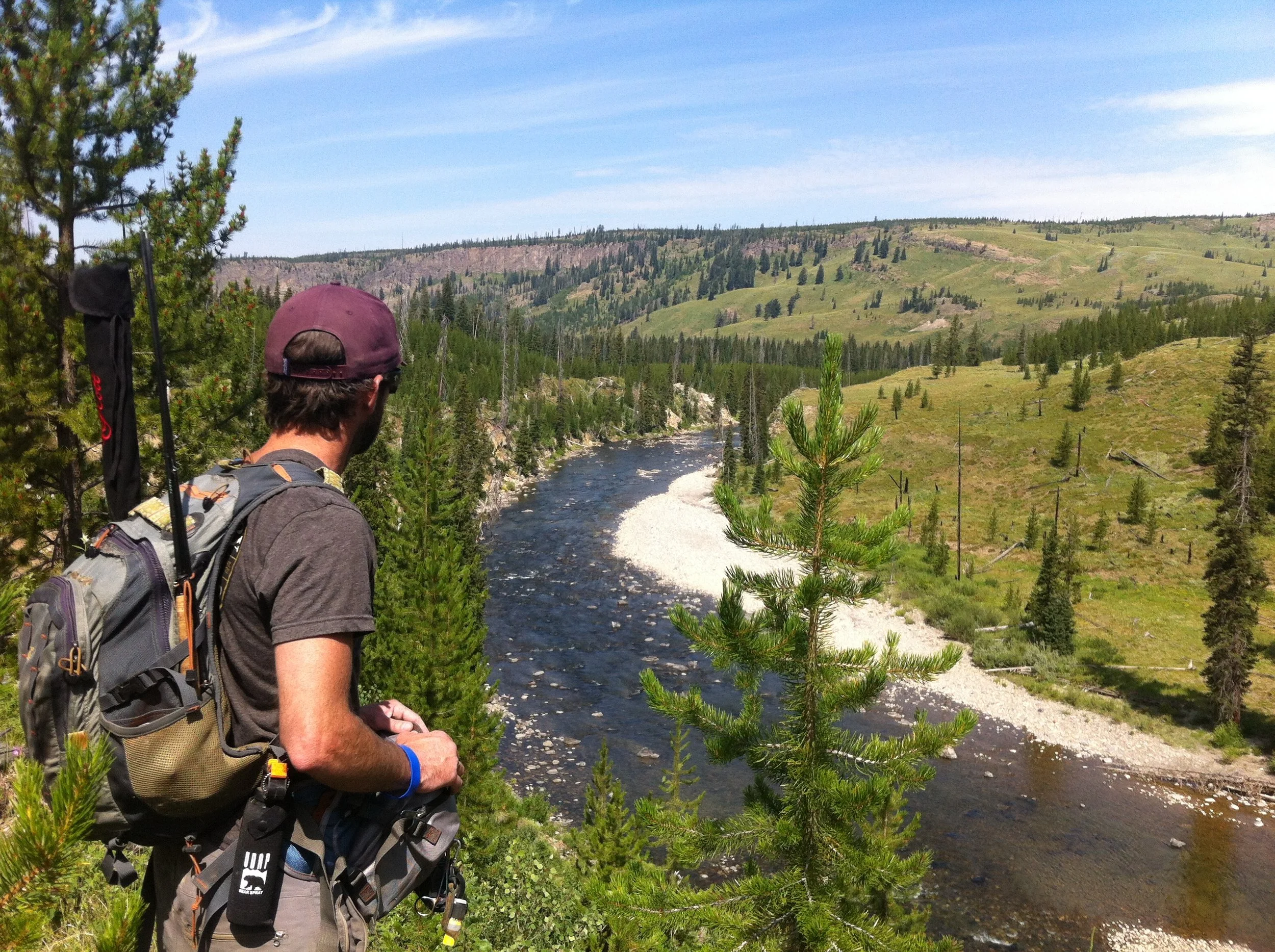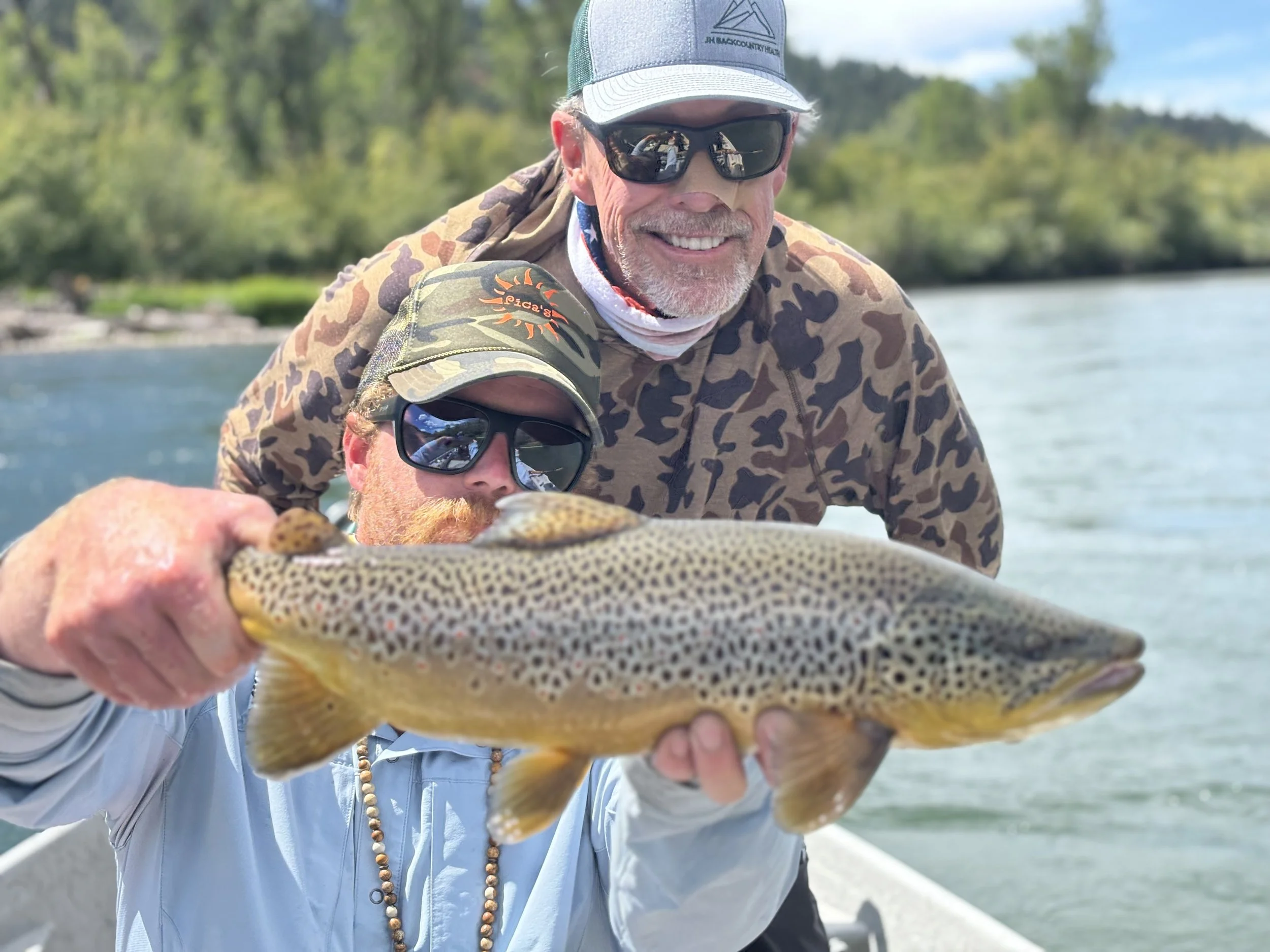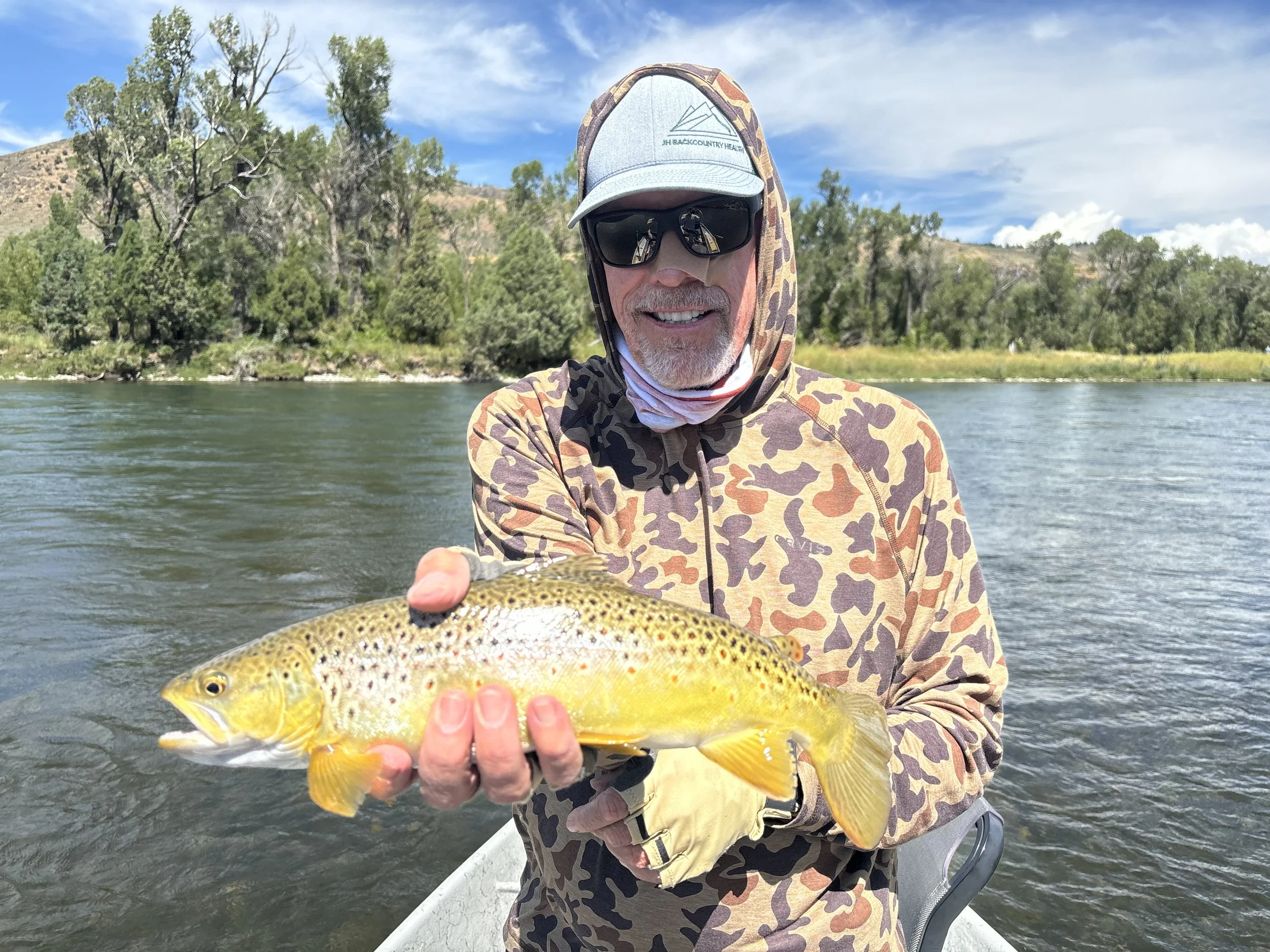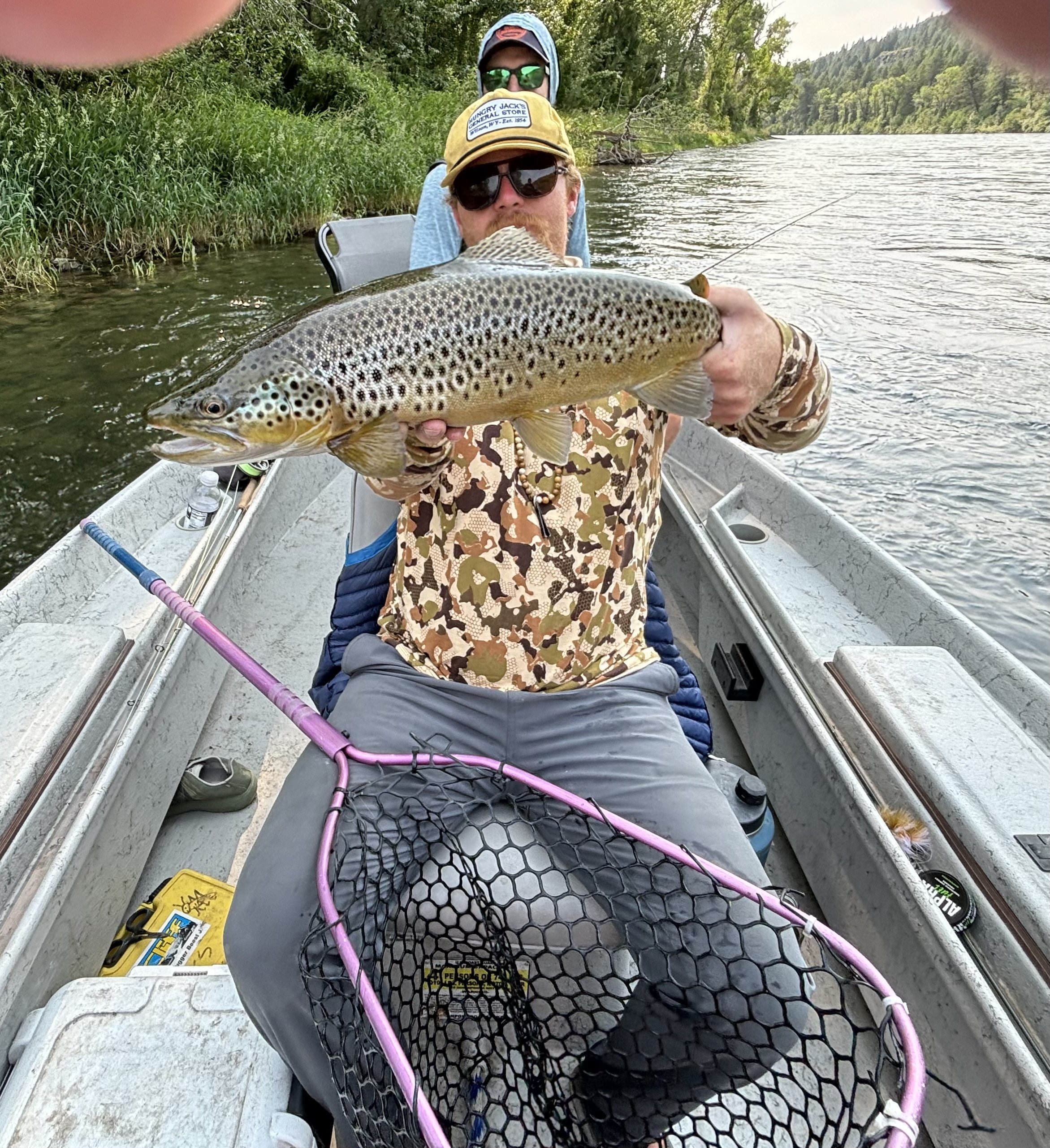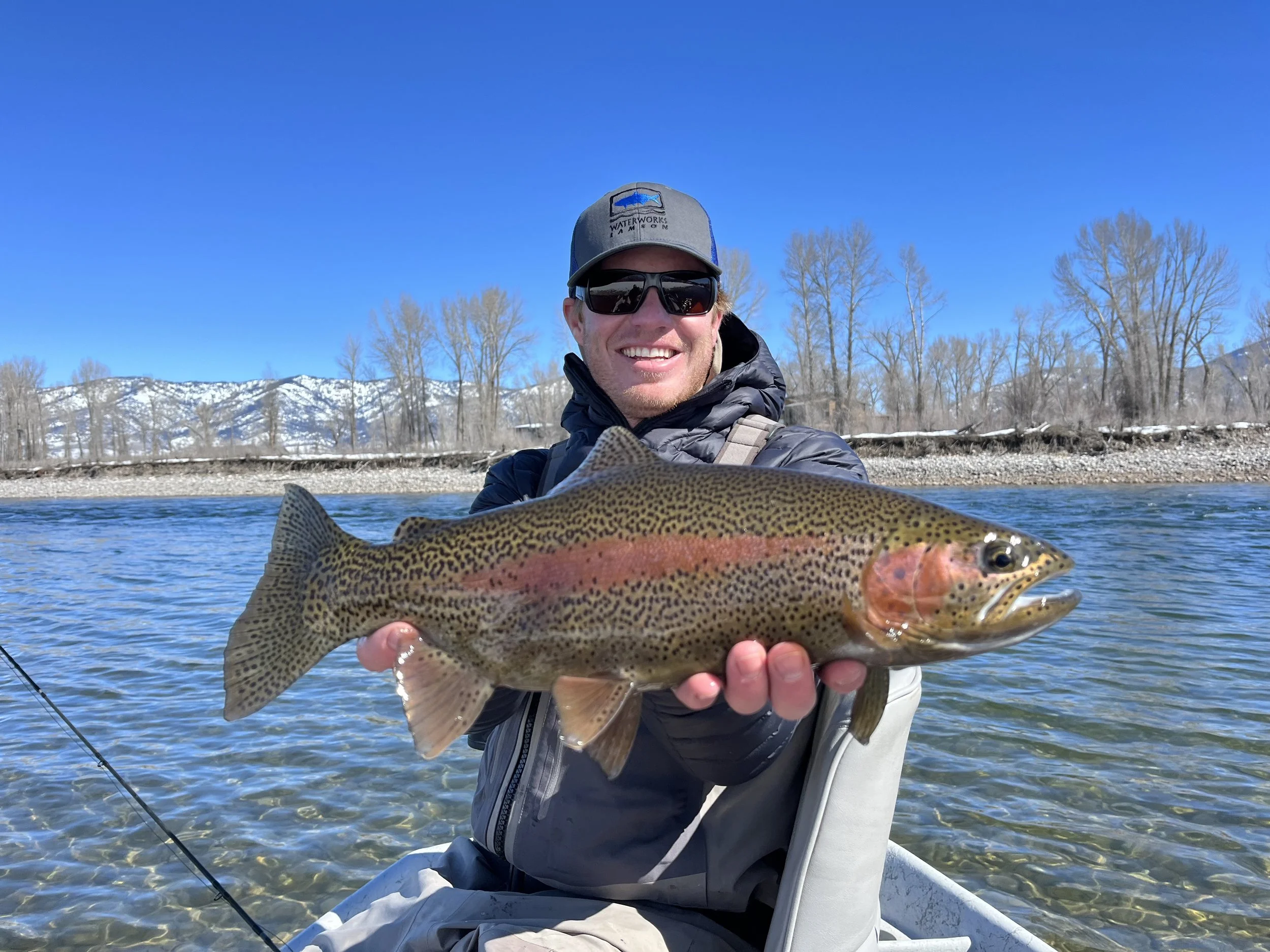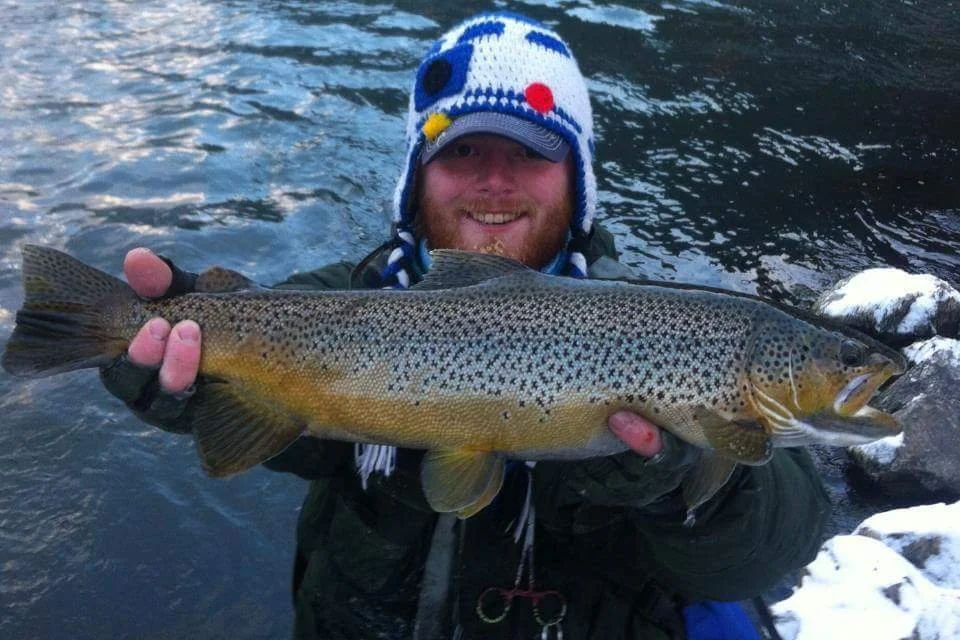north platte river
Grey’s Reef
Grey’s Reef tailwater located in Alcova Wyoming boast a number of 3,000 fish per mile with an average fish size of 16 to 18 inches. The controlled and stable flows produce an impressive average fish size making this section an always exciting experience. I would say the Reef section as well as lower sections of this tailwater comprise of about 92% rainbow trout, with some snake river fine spot cutthroat , a few large grayling, and some monster brown trout making up the rest of the population. But overall your going to be catching very nice sized rainbow and cut bow trout. Most of the Reef is a boat fishery. The top mile of river directly below Grey’s Reef Dam has excellent public wade fishing access, but as the river heads downstream you will need a boat to access most of the river flowing through private land. Below Government Bridge and through Trapper’s Route there is also plenty of public lands adjacent to great public wade fishing spots and good camping.
You can fish the Reef all 12 months of the year. A unique aspect of this amazing tailwater is that from January to December the reef is not only fishable but mostly floatable as well. Winter fishing here is tough to beat. Not only can anglers catch lots of trout, but large trout as well. Throughout the winter there’s usually a few severe cold snaps where floating the reef involves maneuvering the boat around and over ice. When these conditions are present I don’t recommend fishing, if its that cold I don’t think the frozen fingers are worth it. But overall you can count on the Reef being floatable almost everyday of the year. I challenge you to find another trout fishery in the Rockies that offers this level of winter trout fishing & floating.
Spring brings the busiest season of the year to the reef. Anglers from all over usually have the itch to fish after waiting all winter and the reef provides an awesome place to start your fishing season as winter ends and spring begins. Fish are stacked in the upper portion of the river usually crowded into their winter holes. Anglers can expect to nymph up a lot of fish this time of year. The lower sections of river usually haven’t started fishing all that well this time of year, so most boats and anglers are on the upper sections, while the fishing can be on the crowded side, its usually so good it doesn’t matter unless your main goal is solitude. Theres a reason its busy here in the spring, fishing is good!
Late Fall dry fly fishing!
As Spring wraps up the river flows come up and fish start to spread out. Lower sections of river start fishing very well. From Grey’s Reef Dam all the way to Casper anglers can look forward to spreading out and focusing on some awesome dry fly fishing that last from early summer throughout late fall. Starting with PMD’s in late spring, then moving to grasshoppers and big bugs through the summer, we finishing up the dry fly season in the fall with some of the best baetis and pseudo hatches the Rockies has to other. Not only are the hatches incredible, but the extent to which the fish key in on these bugs makes for some of the most fun dry fly fishing there is!
While I love the scenery and solitude of Wyoming, the fish of the North Platte are what made me want to call this place home. A good day here will set the bar very high for fishing. Experienced anglers will enjoy the size and fit condition of these fish while beginners will be thrilled to be hooking so many fish their first time out. Grey’s Reef tailwater is a diverse and mind blowing fishery that offers scenarios beginners will thrive on, and experts will enjoy.
Miracle Mile (North Platte Tailwater)
To quote a good friend (jokingly but not really), the “Miracle Mile is like the NFL of lower 48 trout fisheries.” The land of the big boys. Flowing out of the Seminoe Mountains and Cortes Dam, it flows anywhere from 5 to 7ish miles before entering Pathfinder Reservoir depending on the time of year and snow pack. It is about a 45 minute drive down a long dirt road from Alcova WY. but it is always worth the drive. The Miracle Mile is all on public land, making it a perfect place for fishing, floating & camping. The Mile brings in different age classes of fish from Pathfinder Reservoir throughout the year for many different reasons.
Rainbows head in to spawn in the spring, with the suckers moving in to spawn afterwards in late spring with what I have noticed is a larger age class of trout (usually large rainbows) to eat their eggs and bugs that start hatching in the river. Summer comes and brings with it an awesome golden stone hatch (usually in July) that has impressive fish eating off the surface and gobbling up rubber legs below. Then comes Fall bringing the brown trout into the Miracle Miles system to spawn (this usually brings the crowds as well).
The Mile is known for large hard fighting fish. Heading up to there is always a bit more of a production but its usually worth the drive and extra effort to target big trout. I usually tell my guest when we are heading up there that the Mile can be a very moody river. You work for your fish up there. Sometimes there are windows where the fishing just isn’t very good. But at some point in the day the fishing usually turns on and anglers are rewarded. Other days it seems hard to keep fish off your rod. Whatever the day throws at you, stick it out, fish it hard and you’ll love this trophy trout fishery.
Last thing worth mentioning about the Miracle Mile is that there is NO SHUTTLE SERVICE that operates there. If you are coming with me you have to have a car and be willing to drive the 45 minute drive on dirt roads to get there and run a shuttle. I have never had any complaints about this drive, scenery is great and you get an overwhelming sense of really being out in the middle of nowhere.
Fremont Canyon (North Platte Tailwater)
An impressive wade fishery, this section known as Fremont Canyon flows out of Pathfinder Reservoir and into a short meadow section (Cardwell Access) before flowing into Fremont Canyon itself. Fremont Canyon is a rugged canyon full of pocket water flanked by sheer vertical canyon walls. Although this is on private land, generous ranchers have opened all this for fishing access. Most of the water is being pumped through subterranean pipes into a power plant in the lower canyon only accessible by motor boats. Because of that, the outflow that anglers have to fish is a lot smaller then the North Platte’s other tailwaters. It’s base flow is usually 70 CFS (compared to the Reef’s & Mile’s base flow of 500 CFS). While flows do fluctuate throughout the year depending on water demands and reservoir levels, the flow is usually small and very wadable. If your coming in late spring or early summer check the flows because some years flows are significantly higher, still fishable but very different from its normal base level of 70 CFS.
Fishable all year, the meadow section offers angler excellent sight fishing opportunities. Smaller tippets and little bugs with a stealthy approach are usually the game plan. Early in the year around early March anglers can have the first good dry fly fishing for nice sized fish. This dry fly action extends throughout the year and is also a good area to fish if your looking for a couple hours of fishing. As the river exits the meadow and enters Fremont Canyon anglers have to do some rock scrambling. While fishing the canyon is very doable, anglers looking to explore this canyon should use caution whether entering the canyon from the top or further downstream in the middle of the canyon. This is a bad place to roll an ankle or take a big fall. The fishing and scenery of the canyon are terrific but it does involve serious rock scrambling and climbing. Big fish swimming out of Alcova Reservoir and into the canyon can be targeted here as well as the meadow above. Average size fish is approximately 15 to 18 inches but huge fish can be found here.
Fremont Canyon offers diversity for the anglers looking for some great wade fishing. A good night fishing area as well. If you don’t have access to a boat this area offers at least a couple days worth of fishing and scenery worth checking out.
For the adventurous type, theres big fish to be caught in Fremont Canyon
Pathfinder Reservoir Alcova WY
Pathfinder Reservoir is a gem for fly anglers looking to catch carp. Using my poling skiff we pole and wade fish for big mirror carp in beautiful sand flats. With the Ferris Mountains and the Pedro Mountains as a back drop this reservoir is loaded with big beautiful sand flats full of prowling carp. The exceptional thing about Pathfinders mirror carp is there willingness to take a fly. It is a blast to pull around on my 16 foot Hog Island Skiff and stalk these monsters. While long cast and precision are required you can usually find some easier targets that will still eat and less than perfectly presented fly. Wade fishing along the beaches can be very fun as well. This is also a great way to get accommodated with the angels and cast of saltwater fishing. Running up the bottom of this reservoir to enter the lower Miracle Mile can also get you to some excellent spey fishing water and runs that hold big lake fish.
bighorn river
Big Horn River (Thermopolis WY)
The Big Horn river starts up by Dubois WY and flows down through the Wind River Reservation along the amazing Wind River Range and then eventually into Riverton & Shoshoni WY where it enters Boysen Reservoir. Coming out of Boysen it enters a stunning canyon called the Wind River Canyon that offers anglers amazing scenery and good fishing. Anglers looking to fish this canyon should be mindful that it is on Native American Reservation Land and a tribal license that can be purchased in Thermopolis or at the gas station in Shoshoni is required to fish it. Once the Wind River exits this canyon and approaches Thermopolis WY it becomes the Big Horn River. This is called the Wedding of the Waters. There is no confluence the Wind just becomes known as the Big Horn here. From here downstream we have a permit that allows us to guide this great fishery. Starting in the spring, nymphing and floating this stretch can be good fishing. Some springs can have terrific baetis dry fly action too. As weather warms up and runoff subsides the Big Horn becomes a classic big western trout fishery. Streamers, dry droppers, you name it this river has it. Good fishing can be had all the way through the fall here.
Snake river & Grand Teton Park
Snake River, Grand Teton Park & Jackson Hole Area
The Snake River is a cutthroat trout paradise. Situated in the beautiful Grand Teton Park, the Snake offers unparalleled dry fly fishing with big foam bugs for hungry native cutthroat. There is great early season fishing before runoff, but usually with the Snake’s massive drainage, runoff can cause the Snake to take a good while to clear up for summer fishing. Typically early July is go time for the Snake and good fishing will last through early October. It is a big, steep and fast river, so get ready for alot of casting and a quick hit and run pace. The Snake is loaded with structure and casting big foam fly’s with droppers to the bank and tree jams is so much fun. Streamer fishing is usually good most of the summer and fall. As always cloudy days are best, but even bright sunny days in late July can be really fun to throw big stuff. Between the scenery and river structure it is hard to have a bad time on the Snake River. The Snake running through Grand Teton Park has exceptional wade fishing too. It is loaded with side channels that are fun to camp out on, and the main channel has plenty of great spots as well! Because of the limited permits on the scenic upper sections that flow through Grand Teton Park, booking ahead is a good idea to make sure we can get you a spot on these coveted floats! It is worth noting that the floats on the lower sections of the Snake are also very beautiful and fish excellent as well
The biggest thing to mention in regards to the Snake is time of year. The Snake is a very migratory system. A considerable amount of fish swim up the Snake’s tributaries for a couple of months of the year to spawn. Because of this, from early July to mid August the Snake will have ALOT of smaller fish in it. I usually spend most of my time in July on the South Fork River because of this. Typically I get excited to start fishing the Snake mid August when the Snakes tributaries start to drop and fish migrate back into the main stem of the Snake. Then its party time. Another great window on the Snake is late April to May. This pre runoff window is excellent. Most of the boat ramps are snowed in this time of year. I use a 13 foot Smith fly raft that we can still drag to and from the river allowing us access to good fishing and no crowds at all. This early season fishing is really cool. There is a great Skwala hatch that gets fish looking up, and offers an awesome early season period of throwing bigger foam drys before summer hits. Probably the coolest aspect of late April through May is the fact that none of the Snake’s fish have swam up the tributaries to spawn. Frequently my best days at catching numerous large Snake River cutthroat are during this period. Basically all the big fish are still in the river and starting to eat after a long winter. As summer goes by and we work our way into fall the crowds thin out and it becomes easy to have the river to yourself. Fish still eat big foam flies, and the streamer fishing can be great too. Look to late September and all the way through October for good fishing on the Snake and no summer crowds!
Upper Green River Wyoming, Pinedale Area
Draining the massive Wind River Range, the Green and New Fork Rivers are spectacular freestone rivers. About an hour and half drive from Jackson, the both rivers offer anglers a little bit of everything in a more remote location. The New Fork is a slightly smaller sister to the Green. Both fish similarly and are known for big brown trout. These Pinedale rivers have big stoneflies, loads of caddis, drake hatches and really fun streamer fishing with big nasty stuff. If you like heavy sinking lines and aggressive streamer fishing, both of these rivers should be on your list. Being freestones, these rivers do have a tendency to drop over the course of summer and become impassible in some spots and also have too warm of water to responsibly fish. June through early August is usually my favorite time for this drainage.
Yellowstone
national park
Yellowstone National Park
Yellowstone offers the adventurous angler an overwhelming amount of scenery and great fishing. A great place to get away from crowds and stretch your legs while hunting for trout! My days in Yellowstone usually involving early meet up times around 5 AM. Basically if we are going to go do a park day, we are really going to do it. Long but very manageable hikes can get you to some amazing spots. Anglers should be ready to hike anywhere from 5 to 15 miles round trip on these adventures. The hiking is usually fairly mellow, but walking through some of the large cobble river beds can put strain on hips, ankles, and lower back. I usually like to travel lite and keep things moving! My favorite time of year for these trips are late July through mid August. Fishing can be good outside of this time period but I have found year after year, this is when the fishing is truly on fire. The scenery and water are spectacular up in the park, and usually with even just a little effort it is easy to have plenty of water to ourselves. It is worth noting that these trips are very much in grizzly bear country. Bear spray and paying attention to your surroundings are important. I am not trying to be over dramatic but it is important for anglers to understand that there are ALOT of fur balls up in the park, but with proper preparation it shouldn’t be anything to worry about! I can’t say that I ever really nymph up in the park too. Perhaps the coolest aspect of these trips other then the scenery and wildness of it, is how good the dry fly and streamer fishing can be. Its really a paradise up there and it just takes a little effort to get back to the good spots!
A perfect example of why back country trips into Yellowstone are awesome!
I usually focus on the southern side of Yellowstone. It is an absolutely massive park. There is great fishing on the northern side of the park, but due to its distance from Jackson I find it rather difficult to fit the drive time, hiking, and fishing into one day. I am more than happy to venture further up north but just a heads up, that is a BIG, LONG DAY. The southern side of Yellowstone has some of my favorite fishing area’s and a lot less drive time. Some of my favorite areas are the upper Snake, Mountain Ash Creek & Lamar Valley. But if we plan ahead we can make anything happen! A separate fishing license is required to fish inside Yellowstone. It is easy to get, but another heads up that since the park resides across three different states it does have its own license. Overall Yellowstone trips are usually big days but the wildlife, scenery, amazing water and fish always make it a rewarding day!
While most of the fishing in the Park revolves around cutthroat there places for good brown trout fishing as well.
South fork river
South Fork River Idaho, Swan Valley
The Big Show! The South Fork of the Snake River is an absolute monster. This big fast river holds miles and miles of big trout. Cutthroat, Rainbows and big Browns call this river home. An incredible river for big dry flies. Know for Salmonflies, Goldenstones, amazing PMD hatches, piles of Baetis…this river has it all. Also probably one of the most fun rivers to streamer fish I have ever floated. While being a top tier 12 month fishery, the South Fork really shines in the summer and fall. Starting off in July, we have an entire month of Salmonfly fishing. Often we are just throwing big single foam dry’s to the bank. It is bank blasting at its best. Following the Salmonfly’s, we start to look forward to the PMD fishing. Usually emerging a little later in the day, we are looking for shelves and drop offs to drop anchor on and sight fish to rising fish with a double dry rig. This is usually my favorite dry fly fishing of the year. The cutthroat really key in on these mayfly’s and fishing for them in the afternoon can be lights out!
My favorite time of year for streamer fishing is usually Fall on the South Fork. October through early November are great. During the fall we are really looking for cloudy weather. It rev’s up our fish and brings out the carnivores. Mid summer can be great for throwing streamers as well, but remember we really need to have cloudy weather to usually do well too.
We do offer overnight trips in South Fork’s canyon as well. These trips are fun for the adventurous type and include two days of fishing, outdoor sleeping accommodations and good food! I recommend booking these trips as fas ahead of time as possible because they do fill up fast. Simply put the South Fork is awesome and has everything anglers are looking for.











